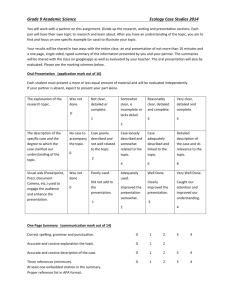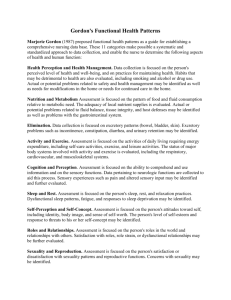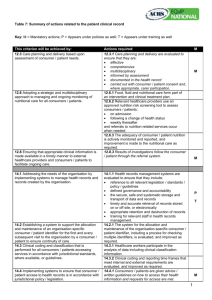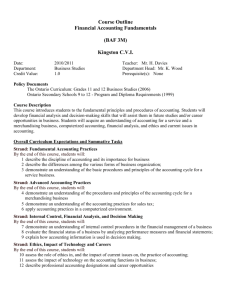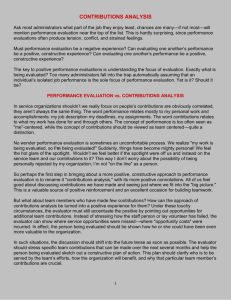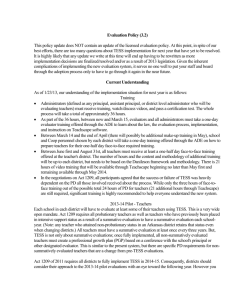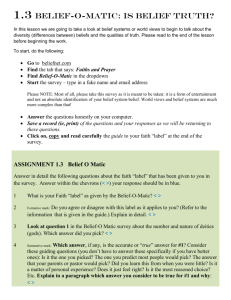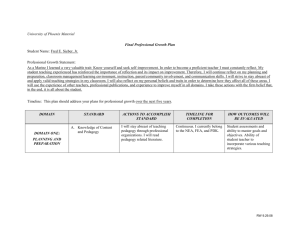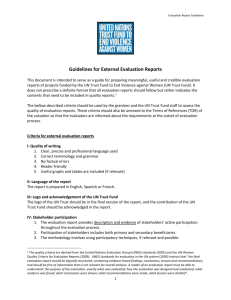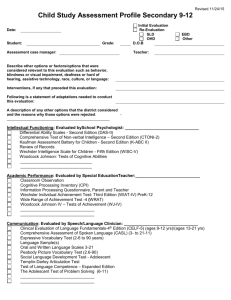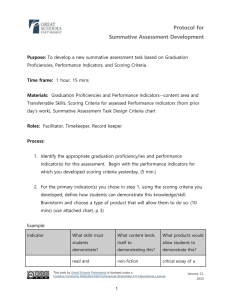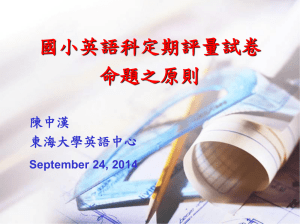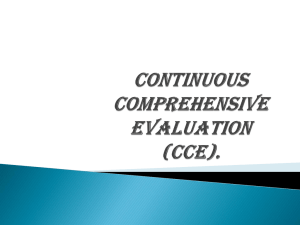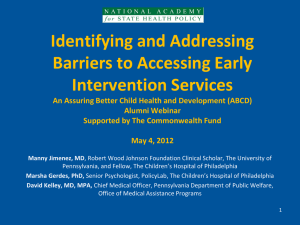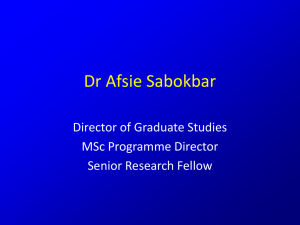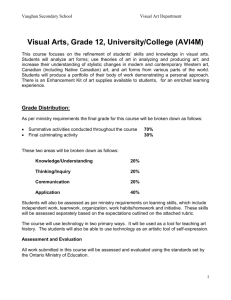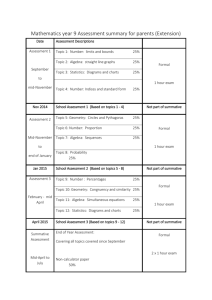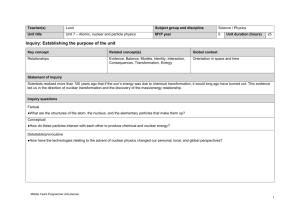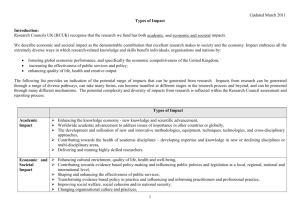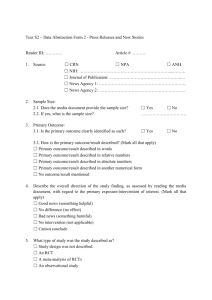Enhancing Professional Practice - Manasquan Public School District
advertisement
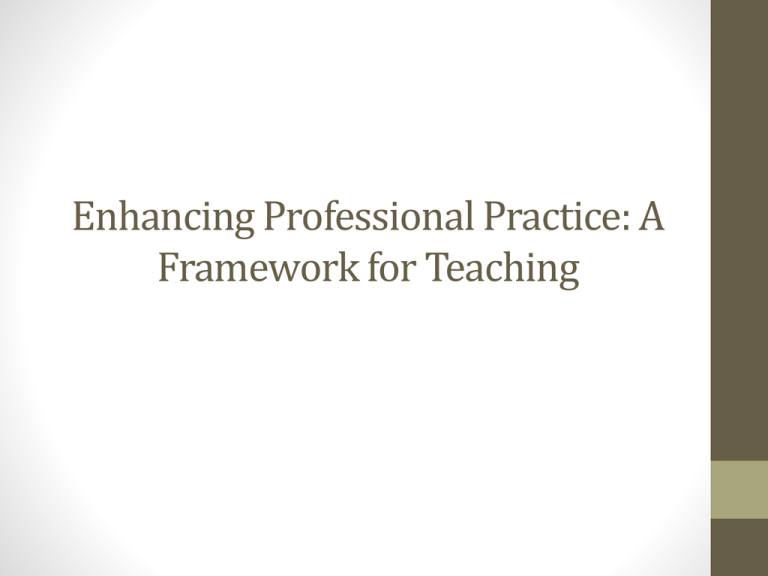
Enhancing Professional Practice: A Framework for Teaching Where do you fit? • Draw a picture or a design of anything you wish using each symbol shown below: the TRIANGLE, the SQUARE, the CIRCLE, and the SQUIGGLE. Draw each of the symbols one time and also draw one symbol two times. 2 We are attracted to shapes that mirror our personalities A square… thrives in a stable environment with clear directions on what to do; is conservative and likes things orderly; if given a task, will work on it until it is finished, even if it is repetitious and cumbersome; thinks logically, sequentially and collects data; has trouble making decisions; is an organizer But if the square becomes a rectangle…. you are a leader, decisive and able to focus on a goal. You enjoy learning new things and are confident about your opinions. You are the only shape who is not frozen 3 A circle…. is a people person; has no hard edges; is the shape with the most empathy, perception, and consideration for others; always makes sure people communicate and there is harmony; listens and communicates well; is a harmonizer A triangle…. is a leader; is decisive and able to focus on a goal; gets motivated by the accomplishment; looks at big-long term issues but might forget the details 4 A squiggle … is off the wall and creative; feels best doing new and different things; gets bored with regularity; when given a task, comes up with bright, new ideas; dislikes the mundane and gets bored easily; is an innovator 5 Who am I teaching? are always working towards something in a logical, systematic way are creative, extroverted, and intuitive; reach out to others but are not always dependable 6 EE4NJ Teacher Evaluation System Goals The NJDOE’s goals for a teacher evaluation system are to improve the effectiveness of all educators in New Jersey’s schools by • establishing a universal vision of highly effective teaching practice based on a common language and clear expectations • implementing teacher practice measures that yield accurate and differentiated levels of performance • providing teachers with targeted professional development opportunities aligned to assessment and feedback to support their growth • recognizing excellence, helping novice teachers and helping those experiencing difficulty 7 Key Elements of an Effective Evaluation System • Annual teacher evaluations based on standards of effective teaching practices • Every teacher, regardless of experience, deserves meaningful feedback on teaching performance each year • Multiple measures of teaching performance and student performance • With student academic progress/growth as a key measure • Four summative rating categories that clearly differentiate levels of performance; used in the summative (annual) evaluation only • highly effective, effective, partially effective, ineffective • A link from the evaluation to professional development that meets the needs of educators at all levels of practice 8 Pilot District Observation Requirements 9 External evaluator: must be appropriately trained and certified or demonstrated proof of mastery; must not be working in the school where he is observing Pilot Student Achievement Components 10 Student Growth Percentile (SGP) • Method to measure student growth from one year to the next • Year 1 students are grouped with those who scored in the same range as they did • In year 2 their progress is evaluated by comparing it to how others in their previous year’s group scored– higher, lower, or stayed the same • Video http://survey.pcgus.com/njgrowth/player.html 11 Pilot District Requirements for Summative Evaluation 12 Additional Questions • How will Special Education teachers, specifically ICS teachers be evaluated? • How will specialists be evaluated? • Will our lesson plans change as a result of this new evaluation model? • How formal will the reflection process be? • Will teachers have input before the evaluation is written? • Can I have a “do-over”? • How can subjects without state tests show student growth? • How does this affect tenure? • How often will the committee report back to the faculty? 13 Timeline January , 2013 Teaching practice instrument November, 2012 District Evaluation Advisory Committee (DEAC) Communicate for evaluation activities ASAP (ongoing) Ongoing community Establish awareness & support from the January, 2013 Create & maintain webpage about evaluation January-August, 2013 Test and refine observation frameworks and rubrics for full implementation September 2013 June, 2013 Thoroughly train teachers on the teacher practice instruments August, 2013 Thoroughly train observers to ensure fair and consistent application of the instruments 14 What to expect MANASQUAN PUBLIC SCHOOLS CLASSROOM OBSERVATION REPORT TEACHER: SUBJECT/GRADE: EVALUATED BY: EVALUATION DATE: STATUS: Tenured NARRATIVE: SUMMARY Planning and Preparation includes comprehensive understanding of the content to be taught, knowledge of the student’s background, and designing instruction and assessment. Classroom Environment The addresses the teacher’s skills in establishing an environment conducive to learning, including both the physical and interpersonal aspects of the environment. Instruction is concerned with the teacher’s skills in engaging students in learning the content, and includes the wide range of instructional strategies that enable students to learn. Professional Responsibilities is concerned with the teacher’s demonstration of his/her commitment to high ethical and professional standards and efforts to improve his/her practice. YES Lesson Plans: A. Consistently Submitted For Review B. Appropriate Format & Content NO 15 Take a break! 16 The Evaluation Instrument 17 The Framework In this framework, the complex activity of teaching is clustered into four domains of teaching responsibility and divided into 22 components of professional practice which is broken down into 72 smaller units. (Danielson, 2007) 18 19 Framework Vocabulary 4 Domains 22 Components 76 Elements 20 Evaluating Classroom Environment 21 Domain 2: Classroom Environment 22 Reference pp. 32-39 in the Rubric Packet or p. 69 in Enhancing Professional Practice Evaluating Instruction 23 Domain 3: Instruction 24 Reference pp. 54-57 in Rubric packet or p. 82 in Enhancing Professional Practice What does good teaching look like? 1 Caci Gillmett Morris Zdanowicz Van Pelt Villano 7 Waldeyer Elms Price Moore Kooklin Fenchel 2 Caravella Harvey Davidson Kopec Bilodeau Certo 8 Hillman Gilbert Lomas Buckley Read Mura 3 Treney Mawn Abraham Driscoll Basaman Harper 9 Onorato Hoffman Martucci J. Freda Voskian Radzinsky 4 Gordon Battaglia Weisert Fagen Grandinetti Eldridge 10 Fenlon Minutoli Glenn Schwartz Valentine Tellone 5 Marden Heeter Boss Hawryluk Hallion Hyland 11 Buss Roach Pappa Lee Wasnesky Santucci 6 McKenzie O’Connor Lobosco Kackos Kenny Kozic 12 M. Freda Apostolou DeMuro Crowning Januario Puryear 25 What does good teaching look like? During a highly effective lesson, what would you as the observer see and hear? The teacher…. The students…. 26 Where does it fit? Domain 1 Preparation & Planning Domain 2 The Classroom Environment Domain 4 Professional Responsibilities Domain 3 Instruction 27 BREAK 28 29 30 Exit Card • List 3 things you learned from this workshop that helped you have a better understanding of the evaluation process • List 2 questions or concerns you still have about the process that we should address 31
